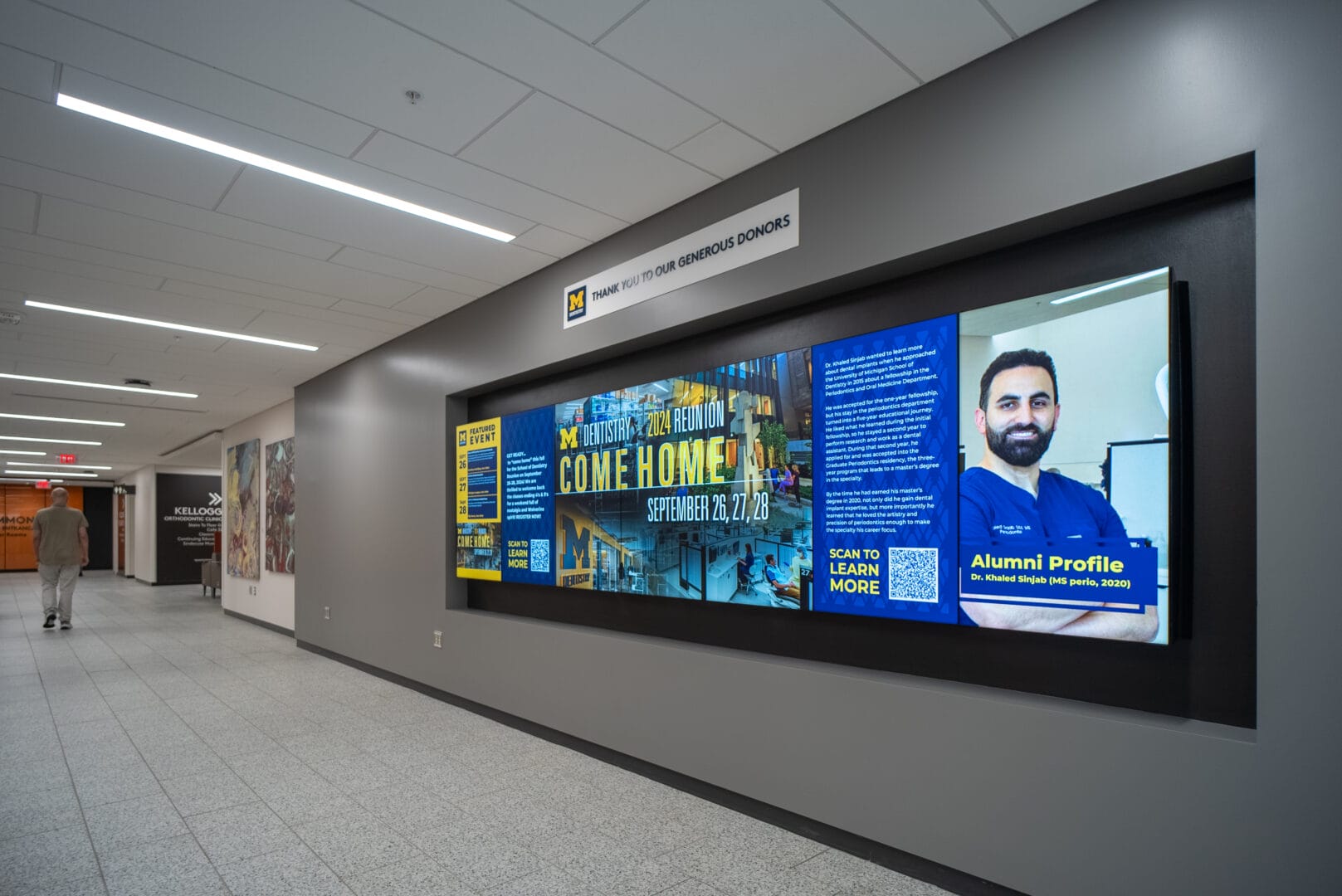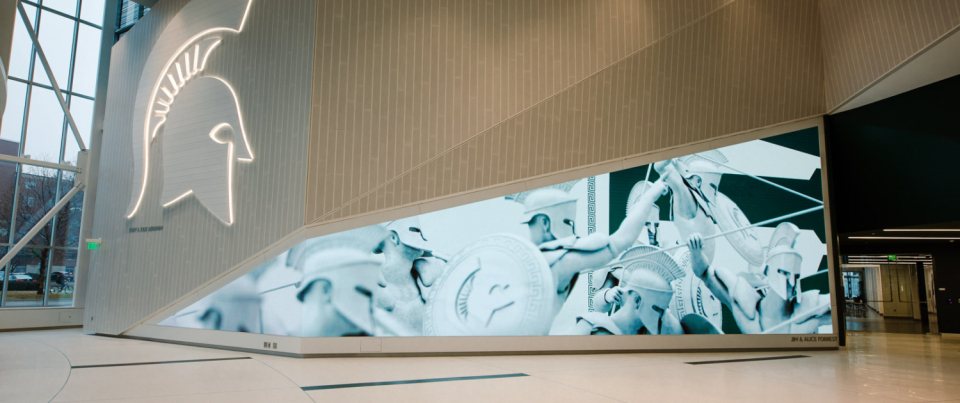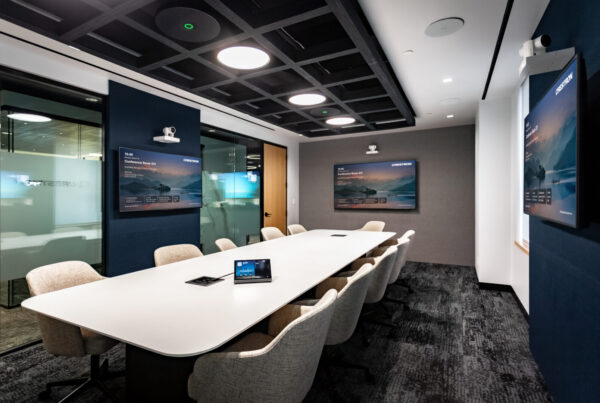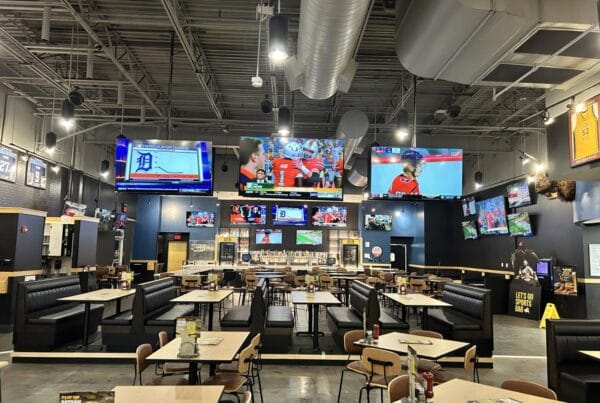LED vs. LCD
Choosing between direct-view LED (dvLED) and LCD video walls can feel like standing at a crossroads. Both options offer stunning visual performance, but the best choice depends on your environment, goals, and long-term needs.
To help break it down, we sat down with Nick Marino, VP of Sales for Bluewater’s Integration Division, who has nearly 17 years of experience helping clients design and implement display systems across industries. Nick shared key differences between LED and LCD, when to use each, and how clients can make a confident decision for their space.
Understanding the Core Difference
“The biggest difference between dvLED and LCD really comes down to how they’re built — and what that means for the experience,”
Nick highlights five major distinctions that should guide any decision:
Seams and Borders: LCD displays have visible lines between panels, while dvLED is completely seamless.
Brightness: LED can reach up to 5,000 nits compared to LCD’s 700, making it ideal for brighter environments.
Viewing Distance: LCD looks best up close, while dvLED shines at medium to long distances — depending on the pixel pitch.
Cost: LCDs are generally more cost-effective, though high-resolution dvLED systems are becoming increasingly accessible.
Maintenance and Lifespan: “If an LCD panel fails, the whole panel has to be replaced,” Nick explains. “With dvLED, we can swap individual modules and even repair them — plus, dvLED lasts nearly twice as long.”
When to Choose LED vs. LCD
For Nick, the best display choice depends on context.
“I’d say LED is a no-brainer for outdoor applications,” he says. “It’s weatherproof and bright enough to combat direct sunlight. Indoors, if you’ve got a wall of windows or need something larger than 120 inches, LED is probably your best bet.”
LCD, on the other hand, remains a strong option when budget or scale are top considerations. “If the display will be 110 inches or smaller and you can live with the visible lines, LCD can deliver great image quality at a lower cost,” Nick adds.
Real-World Examples
Nick recalls a recent project where both technologies found their place — in the same building.
“There was an executive space with large east-facing windows, so we replaced the old LCD wall with a 138-inch dvLED display,” he says. “The brightness made a huge difference.”
Down the hall, another room without as much natural light used a 110-inch LCD video wall to meet functional and budget goals.
He also points to emergency operations centers as environments where LCD still shines. “In traffic management or security operations, where multiple small video feeds are displayed, LCD offers higher pixel density and sharper detail,” he explains. “dvLED can work too, but LCD’s resolution advantage is key for that use case.”
Planning Your First Video Wall
Nick’s advice for anyone starting from scratch? Begin with your goals.
“Look at the space and think about what you’re trying to achieve,” he says. “Once you know your objectives, it’s easy to weigh what matters most — whether that’s seamless visuals, brightness, resolution, or budget. That will lead you to the right choice.”
The Bottom Line
Both dvLED and LCD can deliver incredible visual impact — but the right fit depends on your environment, audience, and priorities.
As display technology continues to evolve, Nick and the Bluewater Integration team are helping clients find solutions that balance performance, longevity, and design. One recent client shared,
“Bluewater did an outstanding job. Despite some initial hurdles, the LED wall turned out exceptionally well, and everyone is delighted with the results. It was a genuine pleasure to work alongside the Bluewater team. Their professionalism shone through despite ongoing construction and unexpected challenges.”
Whether you’re transforming a boardroom, a retail space, or an entire operations center, the best video wall isn’t just about the pixels — it’s about creating a seamless experience that works beautifully in your world. See how we brought this to life in our recent case study.














